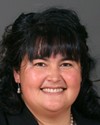I believe I have multiple questions.
In terms of the different streams of immigration that we have, we certainly did the gender-based analysis on our selection criteria for skilled workers. There is no indication that it is biased against women, and it's gender neutral.
For example, we give credit for the experiences of a spouse, whether male or female, and we also extended the work experience from 5 to 10 years, in recognition that women would take time out of the workplace to raise their families.
When it comes to our refugee selection, of course, we're looking at the most formidable groups, and our policy is to resettle the most vulnerable, including women and women at risk. This is now a disproportionate part of our program. What we are trying to do with the new settlement funding.... Over $300 million in the last budget will certainly assist in settlement programs for all newcomers to Canada. In fact, we are reporting an accountability mechanism indicating that 65% of our clients for language training, for example, are women. This will certainly benefit them.
You had other questions there, but I'll summarize it as that. We believe we make strong efforts to evaluate our policies and programs, family unification included, and make adjustments if we have to, wherever possible.




